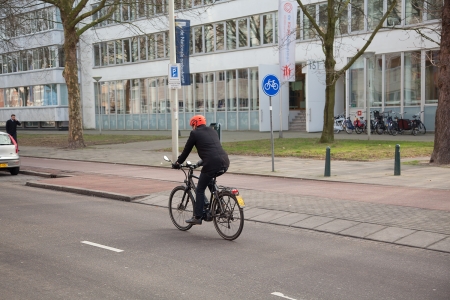An electric bicycle is an umbrella term for electrically powered bicycles. Usually, as in this fact sheet, it means a bicycle which only generates power when the cyclist is pedalling. Formally, however, such a bicycle is called a pedelec; short for Pedal Electric Cycle.
In this fact sheet, we distinguish between two kinds of electric bicycles: the ‘regular’ pedelec and the speed pedelec. A pedelec offers pedal assistance up to approximately 25 km/h, a speed pedelec up to 45 km/h, and the latter is therefore legally categorised as a moped (see the question What rules apply to pedelecs and speed pedelecs?). A pedelec and speed pedelec may look very much alike (see Figure 1).
Some people talk about e-bikes while pedelecs are meant. According to European regulations [1] e-bikes are not pedelecs with pedal assistance, but two-wheelers with an electric motor which do not require pedalling. This turns them into light mopeds (no faster than 25 km/h) or into mopeds (no faster than 45 km/h).

Figure 1. A pedelec (left) and a speed pedelec (right; Source: ANWB [2])
